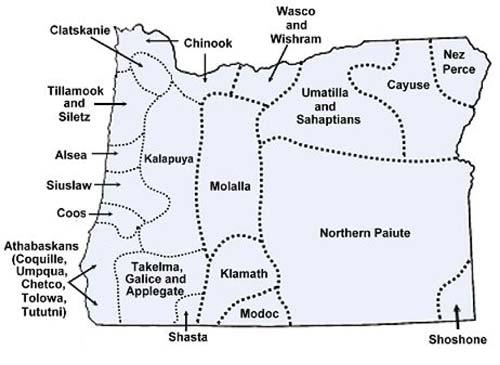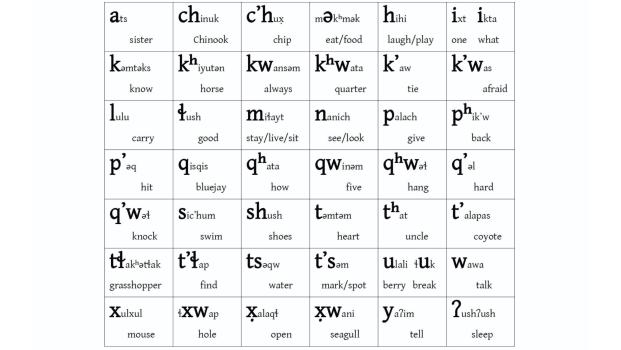Chinuk Wawa is an Indigenous language of the Pacific Northwest
The Chinuk Wawa Program at LCC began in 2006, in collaboration with the Confederated Tribes of the Grand Ronde Community. Together we have built a program that allows students to learn a universal intertribal language of the Pacific Northwest while also learning about the history and culture of Native peoples in this area, like the Kalapuya. Here is an article from 2009 that tells about how our program was started.
For more information, you can continue reading below, or view the recording of a Spring 2022 panel discussion about Chinuk Wawa for LCC faculty.
Chinuk Wawa courses meet World Language requirements for admission and graduation in the Oregon University System. With a qualified teacher, high school students can also receive college credits for studying Chinuk Wawa via the College Now program.
Fall is the time to begin your Chinuk Wawa studies!
We offer beginning Chinuk Wawa (CW101) only in fall term.
If you have already learned some Chinuk Wawa, you may be able to join a different course level. Please feel free to reach out a current instructor via email: sheppardb@lanecc.edu
A limited number of non-credit students may enroll in the course at low cost via LCC’s continuing education (CE) program. CE is an alternative way to enroll in the very same classes along with credit students, and the course has the same attendance and homework requirements for credit and CE students. CE enrollment opens a few weeks before each term. At that time you can find more information at ce.lanecc.edu.
Please donate to support our Chinuk Wawa Language Program!
We offer a spring term scholarship to support credit enrollment in Chinuk Wawa 103 and 203 classes. This scholarship honors our credit students' two terms of academic success, and it helps with third-term retention. For many years, an anonymous donor has supported this scholarship through generous annual donations, but with increased enrollment we have grown beyond this one gift. We need to raise $7,000 this year to cover this ongoing scholarship. To help support our students today, please:
You can also be part of a bigger project by helping provide training for future Chinuk Wawa teachers, travel to conferences, and field trips to regional tribal communities and events. You can contribute to this larger vision. We would love to hear from you! Current instructor Beth Sheppard (sheppardb@lanecc.edu) can connect you with our steering committee.

Chinuk Wawa Magazine
Each year, LCC CW203 students create a magazine entirely in the language. We are so proud of their work! You can download PDFs of the magazines below.
What is Chinuk Wawa?
Chinuk Wawa has been called the first language of Oregon, and also shawash-wawa, Chinook Jargon, and Chinuk. Historically it was a language of intertribal and intercultural communication, and currently it is being revitalized as the heritage language of the Confederated Tribes of Grand Ronde and the Chinook Indian Nation. Grand Ronde has consistently invested in the revitalization of Chinuk Wawa for decades, including their ongoing support of the Chinuk Wawa Program at LCC. Individuals from tribes throughout the language's historic range and beyond have also contributed and benefited from this unique and important program.
Chinuk Wawa arose along the lower Columbia River from the mouth to The Dalles. It began as a Pidgin–a simple language used for communication between speakers of other languages. Over years it developed into a Creole in several communities–a community language used for all communicative purposes.
At the time European Americans first arrived, 18-25 languages of many different families were spoken in present-day Oregon (Gross 2007; D. Hymes 2007). The following map shows approximate areas for the different languages of Oregon.
As the lingua franca of the Northwest, Chinuk Wawa served as the language of communication between speakers of different languages in our region–both tribal and non-tribal. It was the language of exchange and trade at Celilo Falls and at other sites along the Columbia River, and was also used in all areas west of the Rockies from Northern California to Alaska.
Chinuk Wawa includes words from several different languages. The following percentages come from Zenk, Johnson, & Hamilton, 2010:
- 40% Lower Chinook
- 9% Coast Salish
- 3% Nuu-chaa-nulth
- 18% English
- 17% French
- 3% Kalapuyan and other Indigenous languages
- 10% words of mixed or unknown origin
As a creole language, the grammar of Chinuk Wawa is different from some other languages you might have learned in school. You don’t have to add endings to any words. Instead, you use the word order and combination of words to make your meaning clear.
There are many sounds in Chinuk Wawa that are different from English. The sounds of Chinuk Wawa are beautiful, and they are quite similar to those of many other Pacific Northwestern Indigenous languages you might hear or study in the future.
Chinuk Wawa Classes
Our Chinuk Wawa program includes six courses, taught over two years:
- Chinuk Wawa 101 (fall)
- Chinuk Wawa 102 (winter)
- Chinuk Wawa 103 (spring)
- Chinuk Wawa 201 (fall)
- Chinuk Wawa 202 (winter)
- Chinuk Wawa 203 (spring)
In Chinuk Wawa class, a cohort of students moves together from one course to the next, learning about both language and culture. The cohorts usually include students from a variety of generations and cultural backgrounds. On Zoom, you will practice speaking, listening, and reading with your classmates, sometimes all together and sometimes with partners or small groups. At home you will practice vocabulary, pronunciation, and writing. In the winters you will read Indigenous creation stories in Chinuk Wawa. In the fall and spring terms, you will learn to describe yourself, your family, your home, tell stories, and describe images. You will also learn and write about the plants and animals of the Northwest. At the end of the CW203 class, we publish a magazine in Chinuk Wawa created by students.
Chinuk Wawa Course Objectives 100 Level
Upon successful completion of this year-long course, students will be able to:
- Recognize and produce the sounds of Chinuk Wawa.
- Speak using memorized phrases and everyday expressions, identify familiar objects, hold basic conversations using simple sentences, and give short presentations in Chinuk Wawa.
- Respond appropriately when listening to words, phrases, sentences, and questions.
- With help, read both brief and extended texts in Chinuk Wawa.
- Write Chinuk Wawa words, phrases, sentences, and paragraphs with emerging accuracy in spelling and word order conventions.
- Describe elements of the history and culture of Chinuk Wawa speaking peoples, like the Kalapuya.
Chinuk Wawa Course Objectives 200 Level
Upon successful completion of this year-long course, students will be able to:
- Accurately recognize and produce the sounds of Chinuk Wawa for clear communication
- Describe the basic grammatical structure of Chinuk Wawa.
- Use a broad vocabulary in Chinuk Wawa.
- Converse in Chinuk Wawa with emerging fluency.
- Read and demonstrate comprehension of extended texts in Chinuk Wawa.
- Write narrative, descriptive, and opinion texts in Chinuk Wawa.
- Describe elements of the history and culture of Chinuk Wawa speaking peoples, like the Kalapuya.
Why study Chinuk Wawa?
By now you probably have your own reasons to study Chinuk Wawa. Students say it helps them be more open to seeing the world differently. The courses give them an appreciation of the people of this area and their lifeways. They learn about the land they live on. They feel good about supporting Chinuk Wawa language revitalization. They have fun learning new sounds and connecting with people who share their interests.
If you're interested in learning more about the history of what we now call Eugene and the Willamette Valley, check out our library's guide to the Kalapuya people.
"k’uyʔ aɬqi nsa nanich mayka kʰapa chinuk-skul!"
"Hopefully we'll see you in Chinuk Wawa class!"
Top photo by Amiran White


